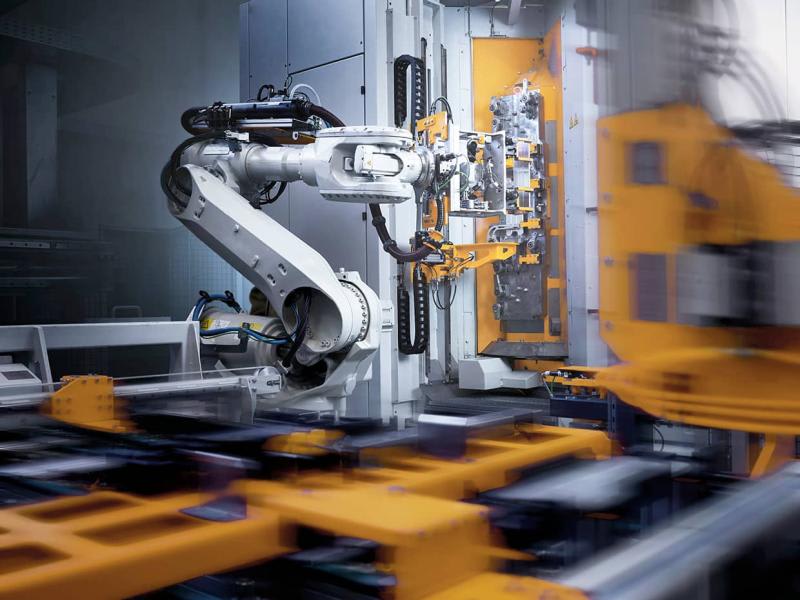It started with China – but not with Covid. To understand the charge towards technology in supply chain management, we must look back to the trade disputes between the US and China preceding the pandemic. For many, the battle since 2018 between the US and the world’s manufacturing centre has brought an urgent need for greater visibility and flexibility to respond to potential disruptions.
That uncertainty has continued – and some say that perhaps even escalated under President Biden. Moreover, other developments have added to pressures to review supply chain risks – not least the virus and the varied policy responses it provoked. While the US and others rapidly returned to relative normality for supplies, others continued with significant restrictions.
Again, those relying on China, only recently abandoning its “zero Covid” policy, were heavily impacted. The Government could shut suppliers’ factories with little notice and many businesses found they lacked the insights to rapidly respond.
Longer-term trends, too, have brought an increasing need for tools to achieve greater flexibility and resilience. The complexity of modern supply chains alone argues for technological solutions to provide visibility that is difficult or impossible to achieve through spreadsheets. An increasing focus on Environmental, Social and Governance (ESG) issues and associated regulation, meanwhile, has increased the risks from blind spots and bolstered the need for greater transparency across the supply chain.
Technology is increasingly seen as critical to meeting this challenge. Crucially, investments in technology are also viewed as not just a cost to mitigate risks but as a potential performance improver. A survey last year by Gartner, a leader in technology research, found 61% of respondents saying technology was a source of competitive advantage.
As its VP Analyst put it, “Given today’s volatile and disruptive environment, supply chain organisations must become more flexible, and the solution is digitalisation.”
Mapping and management
A wide range of technologies will be employed in that process. In 2022 alone, investors put over $7 billion into supply chain related start-ups. New tools and technologies are being developed all the time. Already, though, some of the key trends are becoming clear.
Among these is the rapid spread of the Internet of things, with a growing network of connected devices and sensors helping identify and even pre-empt supply chain disruptions. That means not just real-time tracking of the location of goods across the supply chain beyond that traditionally achievable with radio-frequency identification but also monitoring products’ condition to anticipate problems: Sensors can identify if limits are breached for temperature-controlled substances in transit, for example, so replacements can be ordered even before the original shipments have arrived.
Nor is it simply internal data seeing increased availability. External sources can be leveraged to identify potential disruptions – whether that’s extreme weather events affecting suppliers’ locations or political instability or regulatory developments that could impact supplies.
It is not primarily the quantity of data that determines the resilience and responsiveness of supply chains, however. Rather it is what businesses do with it that counts. Consequently, perhaps the main development we will continue to see in the coming months and years is the adoption of the control tower concept and supply chain twins.
Drawing data together from across the organisation and breaking down information silos in different systems, the approach attempts to create a digital replica of the physical supply chain. Enabling users to visualise and analyse movements, inventories and demand in real-time, it provides end-to-end visibility of the supply chain to anticipate problems, identify opportunities and test scenarios. Organisations can also harness artificial intelligence to forecast demand and optimise inventories, helping them efficiently process and make sense of the increasing volume of data available.
The human touch
Such technologies promise to dramatically enhance supply chains’ robustness and responsiveness. But they are not without challenges. Not least is the availability of appropriate skills to apply and manage such technology. That’s been a particular issue in the last couple of years, since skills shortages as much as supply disruptions have characterised the recovery from Covid.
Organisations must also be clear about how investments in supply chain technology fit in with their overall strategic objectives and digital roadmap. That’s in part because the technology to prevent disruptions is not always most effectively applied to the supply chain itself: Shortages and delays in spare parts for critical equipment, for instance, may be handled by identifying these and pre-ordering and holding higher inventories; but it can also be managed by applying Internet of Things(IoT) sensors to preventative maintenance and condition-based monitoring that prevent the need for parts to begin with.
Perhaps the most obvious challenge that the increasing reliance on data brings, however, is risks around security and privacy. Notwithstanding the complications from regulations that vary widely across different territories, security is particularly important because organisations must harness data from both within and outside. That includes data from suppliers, partners and potentially third parties.
Indeed, much of the data that effective supply chain management will rely on in future is that which organisations have traditionally hoarded as a competitive advantage. In future, organisations seeking to achieve a more resilient supply chain may find they have to move from a competitive model to a cooperative one. Viewing themselves as part of the evolving ecosystem and sharing data could allow everybody to make better, more strategic decisions.
And that leads to the critical paradox at the heart of the digital revolution: The increasing use of technology is not diminishing the importance of the human relationships that have long underpinned supply chains but enhancing it. The greater need to cooperate and share data in real-time is likely to lead to perhaps fewer, but also closer and tighter relationships. To keep the supply chain moving, organisations will increasingly seek not simply vendors, but partners. After all, in any chain, it’s the strength of the links that count.





